Ever since we moved into the house at Sasha Court, I’ve been using home ownership as an opportunity to try out different pastimes and hobbies. Some of these, like painting birds and other wildlife through the house, are things I’ve done before but haven’t tried recently due to being in a rental. Others, like composting, are new, with our backyard giving me ample space to try it out. Falling into this latter category is container gardening, something I did all spring, summer, and autumn on our back patio. Let’s take a look!
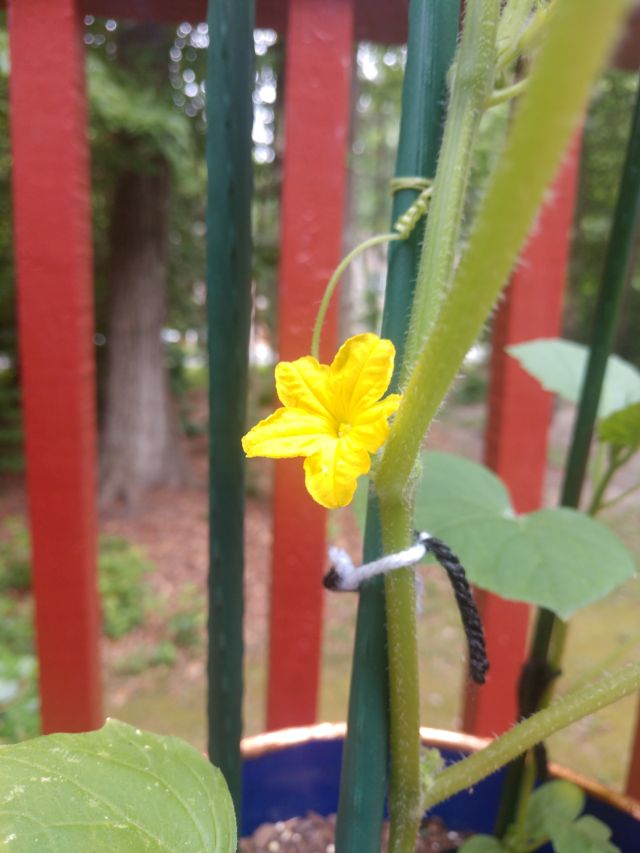
I first became interested in growing my own food while living in Vermont (big surprise, I know; I also got into baking bread while I was there). My roommate had a rental garden plot and always seemed to be coming home with enormous zucchini and other produce. I thought about renting a plot of my own, but soon afterward I moved to New Mexico and forgot about my gardening aspirations for the next few years.
I started getting interested in container gardens in late 2020/early 2021. I had already taken up knitting in response to the pandemic, but I was looking into other ways to spend my ample time at home. Since we didn’t have a sufficient yard for an earth garden, I started looking into growing container vegetables. My initial research on different websites suggested there were many advantages to containers, such as portability, a greater ability to limit or control pests, and in the case of self-watering containers, more flexibility with watering schedules. During the winter of 2021, I bought a book on container gardening for my tablet and read it cover to cover, learning more about how to make self-watering containers, choosing the right kinds of seeds for different-sized pots, and more. I had every intent on trying it out that summer, but I’ll be honest, with the ongoing pandemic I experienced a bit of inertia and had trouble getting motivated. Additionally, once Brandon and I started looking for a house, I decided to hold off on getting any gardening equipment until after we had moved.
With the new house, however, came a spacious new patio, and I found myself motivated to begin a new garden. After setting up an outdoor composter, I invested in a journal to keep track of my garden notes, and began planning.
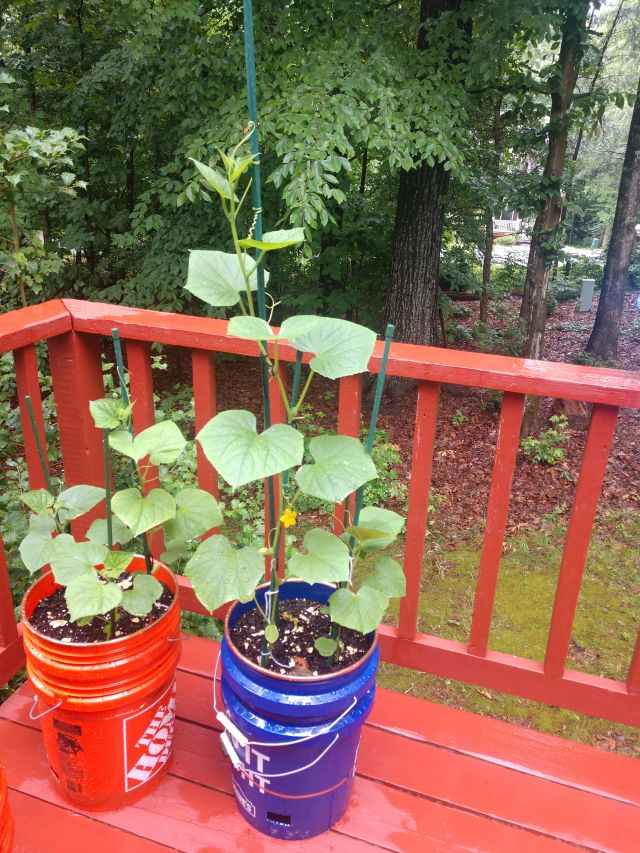
I started by observing the patio and its sunlight patterns. I learned that it received plenty of afternoon sunlight, but given all the trees surrounding the house, I wasn’t sure how well it could sustain full-sun plants. I decided to keep my plans modest and initially focus on partial-shade plants. Following the instructions in my book, I made two self-watering containers using 5-gallon buckets, where I’d rotate different crops depending on the season. I also purchased two windowboxes for the railing, where I’d grow lettuce and other salad greens.
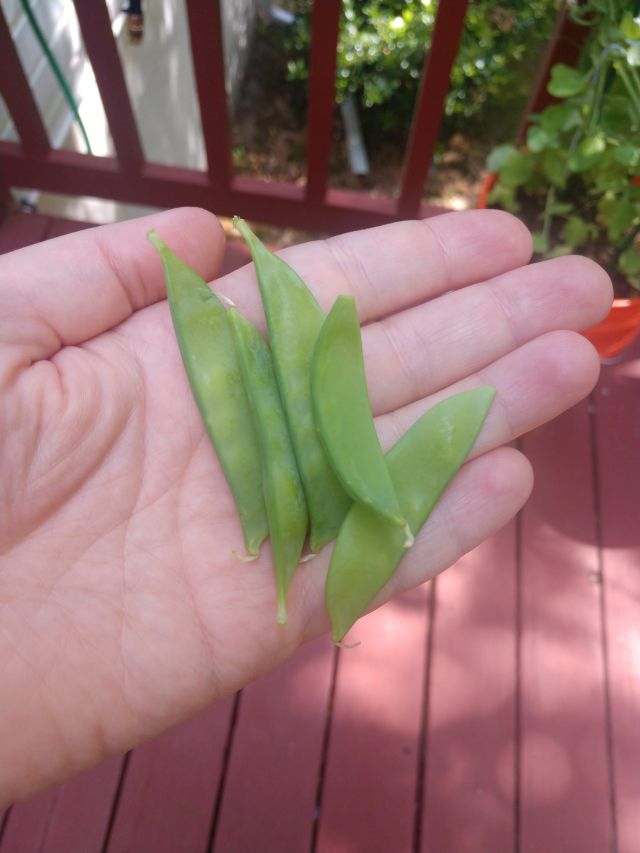
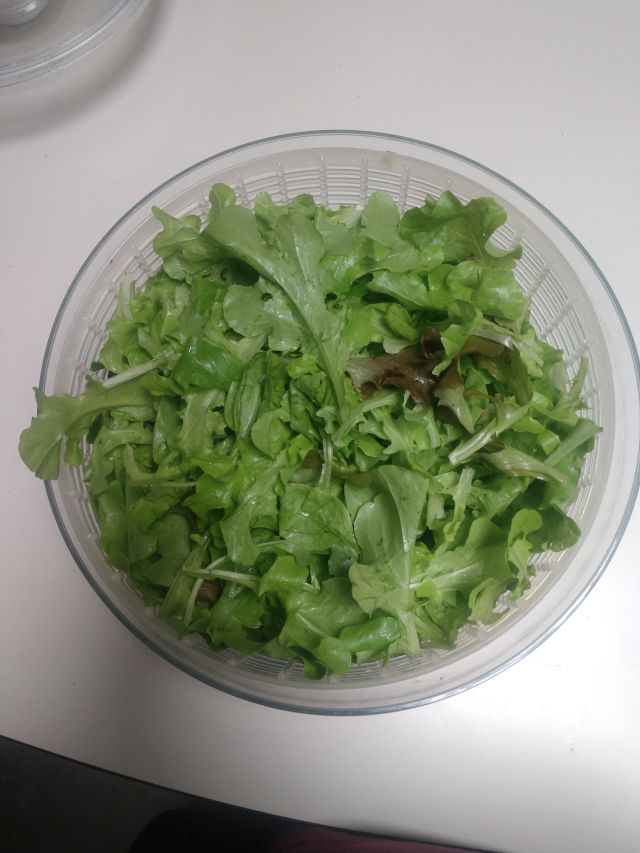

Over the course of this season, I gradually expanded my garden as I became more familiar with my patio and its growing capabilities. While I initially started out with two self-watering bucket containers, I had six by the end of the season. During this past spring, summer, and fall, I’ve grown snowpeas, cucumbers, lettuces, and more. Getting the materials for the containers was a bit of an investment in terms of time and money, but now that I have them, I’ll be ready to go next season. I’ve also been researching how to keep and revitalize my soil for next season, so my expenditures should be significantly less than they were this year.
There’s definitely been a learning curve as I’ve gotten better acquainted with Virginia’s growing season. While I started preparing my containers in late February so I could have my cool weather seeds in the ground by March, I’ve learned that I can start sooner when it comes to spinach, peas, and other cool-tolerant crops. I’ve also learned that due to the ample rain we get here, drainage is key, and that I need to keep an eye out for fungus gnats early in the growing season. On the vegetable front, I’ve learned the hard way the importance of thinning out seedlings early on in the growing cycle, that I need to switch to heat-tolerant lettuces relatively early in the growing season, and that when it comes to containers, training vines to climb stakes is key to keeping your patio tidy.
But the most important thing I’ve learned is that vegetables grow really, really well out there. The cool-weather vegetables came in fine, even if I didn’t thin them out the way I should have, and contrary to my concerns, the full-sun vegetables have done great out there. The cucumbers in particular, which I planted in late May, grew so tall that they folded over on themselves once they reached the top of their stakes and grew back downwards.

I also got help from friends in the form of local wildlife. As the cucumber vines matured, they became homes for spiders, praying mantis, and other critters that like to eat gnats and other pests. Pollinators such as bees became regular visitors as they sought out vegetable flowers. Spiders also took up residence around the patio, creating webs near the windowboxes and other crevices. I even found birds perching in the cucumbers occasionally to eat insects. As such, the insects I had trouble with early in the season practically became a nonissue, and I had the opportunity to observe some really cool miniature ecosystems.
The project was nourishing in more ways than one. Aside from feeding ourselves and supporting some local wildlife, the garden became a place of ongoing inspiration in terms of sketching. The cucumber vines in particular were fun to sketch, with the dappled sunlight filtering through the leaves providing endless opportunities for experimenting with glazing and scumbling.
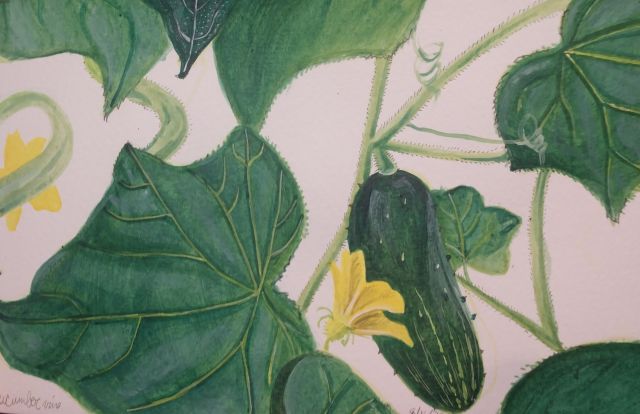

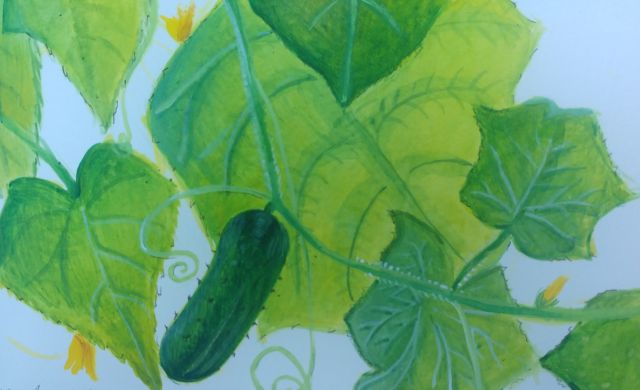
I really enjoyed this project. Spending time with the plants was therapeutic, and it’s really satisfying to grow, harvest, and eat your own food. Now that I know that I can grow a variety of food out there, Brandon and I have already started thinking about next year’s garden and what we can grow out there.